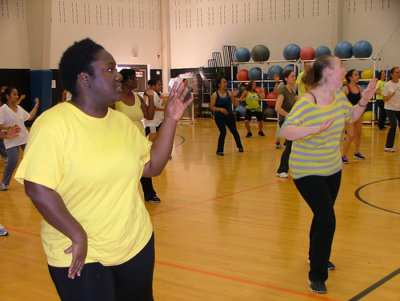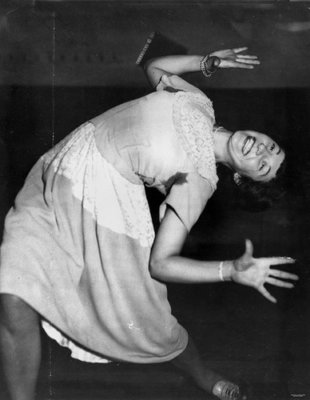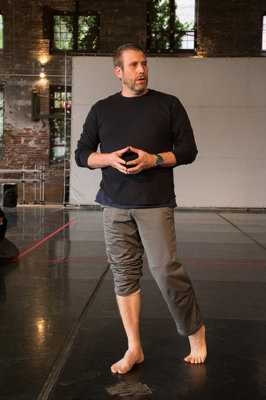What is Dance Movement Psychotherapy?
by Sarah Boreham
Like all forms of therapy, dance movement psychotherapy (DMP) is designed to help you understand yourself and your emotions and help you navigate life more effectively.
But while most forms of psychotherapy use talking as a main method, dance movement therapy also brings in physical movement to help you feel a greater connection between your mind, body, emotions, sense of spirit, and capacity to communicate.
Dance movement psychotherapy sees the way we move as important to communication and expression as words. The underlying principle of dance movement therapy assumes that your mind and body are interconnected, and that any changes that happen in the mind effects the body and vice versa.
A common misconception about dance movement therapists is that they are either a physiotherapist, dance teacher or a relaxation practitioner. Dance movement therapists are actually trained in body movement and psychotherapy, not one or the other.
Dance movement psychotherapy doesn’t have to be something you do by yourself. It can be done with a partner, a family, or in a group. And it doesn’t have to be the only therapy you are working with, but does integrate with other types of psychotherapy and is often offered with, for example, art therapy.
Who can benefit from dance movement psychotherapy?
Because Dance Movement Psychotherapy focuses on non-verbal communication, it can have a broader spectrum than some other therapies, able to help people from young children to the elderly as well as being useful for those who struggle to speak or don’t enjoy talking.
In the UK, dance movement therapy is recommended by the National Institute for Health and Care Excellence (NICE) as an effective and research-proven way to treat schizophrenia.
It is also growing in popularity as an intervention for diagnosed depression, anxiety, dementia, autistic spectrum disorders, seasonal affective disorder (SAD), OCD, personality disorders, addictions and substance abuse, psychosis, PTSD and medically unexplained symptoms (psychosomatic symptoms). Dance movement therapy is used as an intervention by the NHS and in areas that include education, social services, and wellbeing and is used with both adults and children.
Dance movement therapy is widely used in non-diagnosis situations as well, with what Mary Whitehouse (a DMT pioneer) called ‘normal neurotics’. Dance movement therapy facilitates self-development, self-care, expression, growth and exploration and is therefore helpful for those suffering mental or emotional distress, relationship difficulties, and occupational challenges. By exploring nonverbal behaviours, gestures, and stances you may gain greater understanding about how you communicate and how this is understood by others – how powerful is a gesture, a look, a turning away from a person?
How might a dance movement therapy session work?
Like many forms of therapy, individual dance movement therapy generally involves weekly sessions for an hour at a time in an atmosphere that is private and confidential. DMP can also be done as a group session. It can be both a short or long term therapy, depending on your personal needs and issues.
And like all forms of therapy, DMT is a ‘relational’ practise. It works by creating a supportive relationship between you and your therapist, or you, your therapist and your group, that helps you learn about yourself and others.
A session will generally consist of different segments – a warm up, a release, time for theme development, working on ‘centring’, and then closure.
During warm up, a verbal check in is encouraged while gently warming up the body. Areas of emotional and physical tension or relaxation may be identified as your awareness is brought to you body and self.
In the work with release, you will be encouraged to move your body resourcefully and freely, perhaps experiencing insight from the way you choose to move into learned unconscious patterns that are influencing your everyday behaviour, emotions and relationships.
Themes refer to patterns that might arise from the work, either from your body movements or verbal communication. These may be found in reaching, stretching, rhythms, sharing movement with your therapist or group, your use of space and directions, your impulses, and your motivations and your preferences, amongst other things. These themes will then be linked to patterns in your life that can then be released or reframed (seen from a different more helpful perspective).
For example, if you often find yourself feeling that people stand too close for comfort, a dance movement therapist might help you explore through movement your preferences for kinaesthetic boundaries and where and when they are stepped over in ways that cause feelings and thoughts of threat.
As your individual attitude towards space is something you learned as a child when you were developing a sense of who you are, exploring your ideas of spatiality might reveal a need for more attention, a sense of insecurity around others, or something else individual to you. And it might reveal moments in your life you felt you were not allowed space, or given too much space.
Similar to the popular practise of mindfulness, centring involved being present in the here and now by centring your awareness into your body and working to feel ‘grounded’. This may offer you a sense of security and awareness from which you can explore the themes that have arisen for you in greater depth. This can involve looking at both past memories and current difficulties.
Closure is a thoughtful wrap up for the session. The session will end by coming together with your therapist (and/or group) to share your experience of the session and reflect in whichever way you want, either movement and words.
What benefits can dance therapy offer?

By: JBLM MWR
Dance therapy might offer one or several of the following benefits, amongst others:
- alleviate anxiety
- understand yourself better
- have a greater sense of who you are and more self-awareness
- better at expressing yourself and your emotions
- feel more confident
- increased energy
- set better personal boundaries
- understand the way you relate to others more clearly
- have a better ability to stay in the here and now
- a greater ability to relax
- increased empathy for yourself and others
CONCLUSION
In a world that can seem overly focussed on the way we look, it can be more and more difficult for many people to feel present in their bodies as they struggle with feeling different or judged. Body therapy, which can help you feel more at home with your body and who you are, is a timely therapy to explore your life and begin to feel more confident.
Sarah Boreham is a registered dance movement psychotherapist who has worked with both children and adults in areas such as depression and anxiety, parent and child issues, and addiction recovery. Learn more at her website www.movementchangeslife.com .






